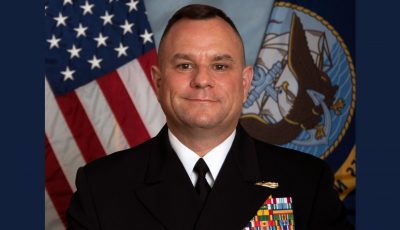RICK’S COLUMN
Marine Corps is a stressed-out organization
The U.S. Marine Corps is experiencing all kinds of pressures and stressors both internal and external to the organization. The Marines have a lot of work-in-progress efforts to attend to in order to remain relevant and useful toward protecting American interests abroad.
The Marines also have a lot of work to do to further support a variety of naval operations. Major organizational change in the form of redesigning Marine Corps forces stems directly from the White House’s national security strategy issued during President Trump’s tenure in 2018. The most senior Marine Corps leaders are spending extraordinary amounts of time on working through this matter.
The Marines need large new surface ships that can take them to and from areas where they need to fight. The Marines lack the authority to simply place orders for the construction and delivery of new transport ships. The Marines don’t control the money and don’t make final decisions for purchasing new ships.
The Navy remains committed to spending money on constructing ships that can freely operate throughout the deep blue Pacific ocean landscape as opposed to near shore spaces carrying around Marines.
Political fallout and the need for the Marine Corps to get things right
Marine Corps leaders continue to have a difficult time managing the political fallout from last year’s mishap where several Marines and one sailor died after the amphibious vehicle they were navigating sank hundreds of feet into the ocean off the California coast.
This accident created a firestorm within and outside the Marine Corps that led to several high-level investigations into the causes of the accident. One outcome of this mishap is that the Marines are no longer using amphibious assault vehicles to train worldwide.
Marines continue to hitch rides on ships that are allied military vessels as one of several ways to manage a variety of military missions ranging from forceable entry activities to performing humanitarian assistance work. Perhaps this is one way to save taxpayers billions of dollars in transportation costs, but it is a strategy that is heavily dependent on foreign military leaders.
Closer to home, Marine Corps leaders have not yet fully satisfied concerns and answered lingering questions tied to the destruction of our ancient Chamorro human resource corridors in Guam. Questions also remain unanswered when it comes to understanding just how toxins produced from the future firing range complex will be cleaned up in the air, ground surface and subsurface domains. Concerns over cost of living, increasing solid waste production, and quality of life issues also remain outstanding.
The decision to build a firing range complex over the northern water lens is a recipe for additional freshwater contamination risks and possible disasters for the future of Guam’s villager population.
Where the Marine Corps is headed
The Marines are trying to properly place themselves in the broader Pentagon modernization effort to prepare for the full range of future military operations in support of naval missions and it’s painful to watch.
The Marines have been cutting personnel costs, ridding themselves of heavy land weapons such as tanks, shutting down infantry units, cutting back on rotary wing aircraft inventories, and looking for ways to better apply technology resources that give the Marine Corps the ability to destroy and damage intended targets using aircraft systems and land combat vehicles that are unmanned, while also looking for ways to fight across the entire electromagnetic spectrum.
The Marines continue to also struggle with retaining pilots and properly maintaining existing aircraft assets and using newly produced state-of-the-art fixed wing airplanes.
Complexity is the future
American military forces, including the Marine Corps, have lost unfettered access and control of the Pacific Ocean region, especially in the western Pacific and China’s near seas areas.
The Marines are trying to radically transform and reconstitute how they prepare and fight future wars over shorter periods of time, after fighting the past 20 years in landlocked areas of the world.
The Marines are attempting to return to their ocean-based roots and are doing it in a way that assumes great power competition with China and closer collaboration with the Navy.
Because all this is happening literally in our Blue Ocean continent backyard, it is in our collective Chamorro Pacific Islander civilization interest to continue to pay very close attention because our natural resource corridors remain at risk.

























